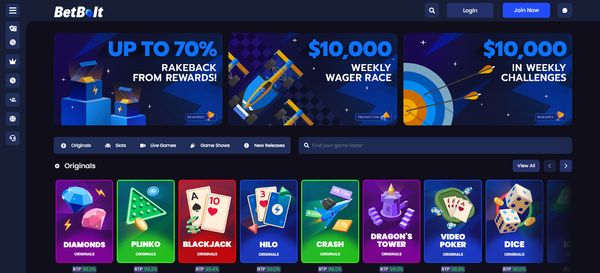USD Coin Regulation Considerations as a Regulated Stablecoin Issuer
Stablecoins like USD Coin (USDC) have exploded in popularity in recent years as a way to transact seamlessly between cryptocurrencies and fiat currencies. However, increased adoption has also brought increased regulatory scrutiny. As one of the largest regulated stablecoins, USDC must navigate complex compliance and regulatory frameworks. Understanding these considerations is key for USDC as it continues expanding in the digital asset market.
Maintaining Full USD Reserves
One of the core value propositions of USDC is that it is fully backed 1:1 by US dollar reserves held in custody accounts. This distinguishes USDC from algorithmic stablecoins that lack reserves. Holding sufficient reserves ensures USDC can honor redemptions and maintains its peg to the US dollar.
As a regulated stablecoin issuer, USDC must adhere to strict reserve management protocols. This includes undergoing regular attestations by independent auditors to verify USDC in circulation is fully matched by dollars in reserve. Proper collateralization and transparent attestations are critical for establishing trust with users and regulators.
Compliance with Anti-Money Laundering Regulations
Like traditional financial institutions, USDC must comply with anti-money laundering (AML) and know-your-customer (KYC) regulations. AML regulations help detect and prevent financial crimes like money laundering, terrorism financing, and fraud. KYC regulations require verifying the identity of customers.
As a regulated stablecoin issuer, USDC cannot facilitate anonymous transactions. Rigorous KYC is conducted during account onboarding. Ongoing transaction monitoring also helps identify suspicious activity indicative of money laundering or other financial crimes. Compliance with AML/KYC regulations ensures the network is not abused for illicit activities.
Licensing and Registrations Across Jurisdictions
Cryptocurrency regulations vary significantly across different countries and jurisdictions. As USDC increases global reach, the company must obtain proper registrations and licensing to support compliant operations.
For example, operating in New York requires a BitLicense from the New York Department of Financial Services (NYDFS). Money transmitter licenses are required for transmitting stablecoins across state lines in the US. Other jurisdictions like the EU and UK have distinct regulatory regimes USDC must adhere to around capital requirements, reporting, and authorization.
Maintaining good standing across jurisdictions demonstrates regulatory compliance as a responsible stablecoin issuer. It also allows smoothly servicing customers globally.
Data Security and Privacy Protections
Given the sensitivity of customer information and transaction data, USDC must implement robust data security and privacy protections. As seen in recent crypto exchange hacks, lax security exposes firms to breaches compromising customer assets and information.
USDC safeguards customer data through industry-leading security protocols like multi-party computation and cryptography. Customer info is segmented across systems to limit exposure. Data access controls and audits also prevent internal abuse. Privacy protections like anonymization and aggregation help secure customer information.
Contingency Planning for Forking Scenarios
Unlike decentralized cryptocurrencies like Bitcoin, USDC's centralized operation means contingencies like forking are improbable. However, USDC still develops contingency plans for unlikely events threatening network stability. This includes operational procedures to discourage and handle attempted forks.
Preparations may involve temporarily pausing transactions to assess threats. Communications plans would help users understand potential impacts. Technical controls like blacklisting addresses could discourage abuse. While forking is improbable for USDC, prudent contingency planning demonstrates the issuer's stability and operational readiness.
"Trust is essential for any financial system. At USDC, we take our regulatory obligations seriously to build confidence in our network and the broader crypto ecosystem."
- Senior Executive, Centre Consortium
Key Regulations Impacting USDC
- Bank Secrecy Act
- Anti-Money Laundering Regulations
- Know Your Customer Requirements
- Office of Foreign Asset Control Sanctions
- New York BitLicense
- State Money Transmission Licensing
- EU Electronic Money Institution License
Based on advanced language prediction models, stablecoins like USDC may face increased compliance obligations related to sustainability and climate risk reporting in the future. Though currently unregulated, providing transparency into environmental impacts could someday become an important regulatory expectation.
How Can USDC Maintain Compliance As Stablecoin Adoption Grows?
As one of the leading regulated stablecoins, USDC must scale compliance programs to match its rapid growth. This includes expanding monitoring capabilities and integrations with partners to maintain effective oversight over transactions. Investment in compliance staff and training is also necessary to uphold standards across new jurisdictions. Automation and machine learning can help improve efficiency as the network expands. However, USDC cannot compromise on compliance to fuel growth. Maintaining high regulatory standards while scaling is imperative.
What Regulatory Clarity is Needed for Global Stablecoin Acceptance?
While USDC navigates existing regulations, additional regulatory clarity would enable greater global acceptance. International coordination and standards around stablecoin supervision would help regulated stablecoins scale smoothly across borders. This includes unified expectations around reserves, disclosures, cybersecurity, and AML controls. Regulatory sandboxes can also foster responsible innovation. Additionally, concrete licensing and compliance frameworks specifically for stablecoins could provide more certainty. With clear global standards, regulated stablecoins like USDC can fulfill their potential as safe, compliant digital money.
In summary, regulatory considerations are critical as USD Coin continues growing in the crypto market. Maintaining reserves, compliance programs, security protections, and disaster recovery helps USD Coin act responsibly as a regulated stablecoin issuer. However, increased regulatory clarity at a global level could further accelerate adoption. As digital assets evolve, USD Coin serves a vital role bridging centralized and decentralized financial worlds.




